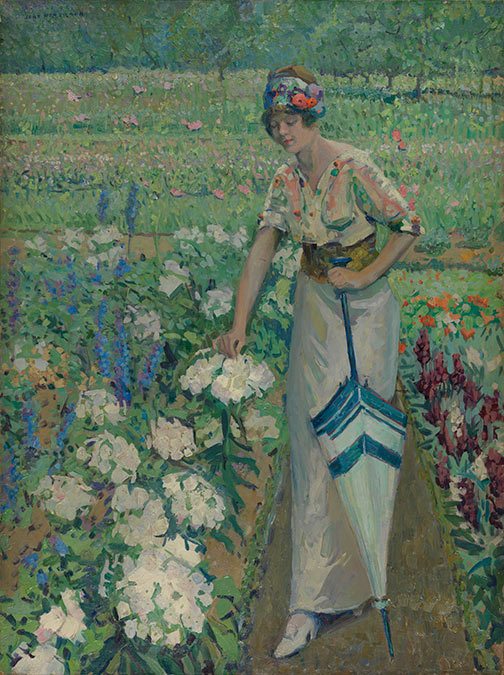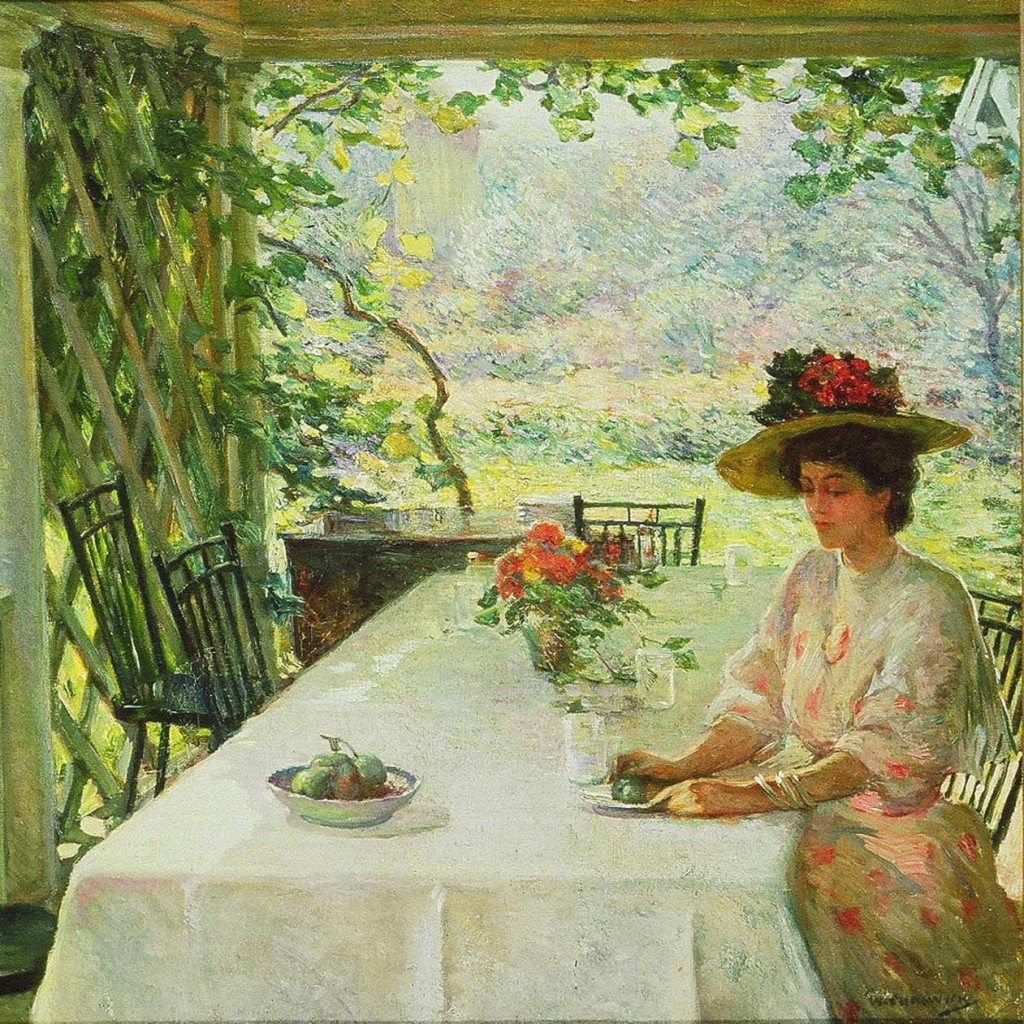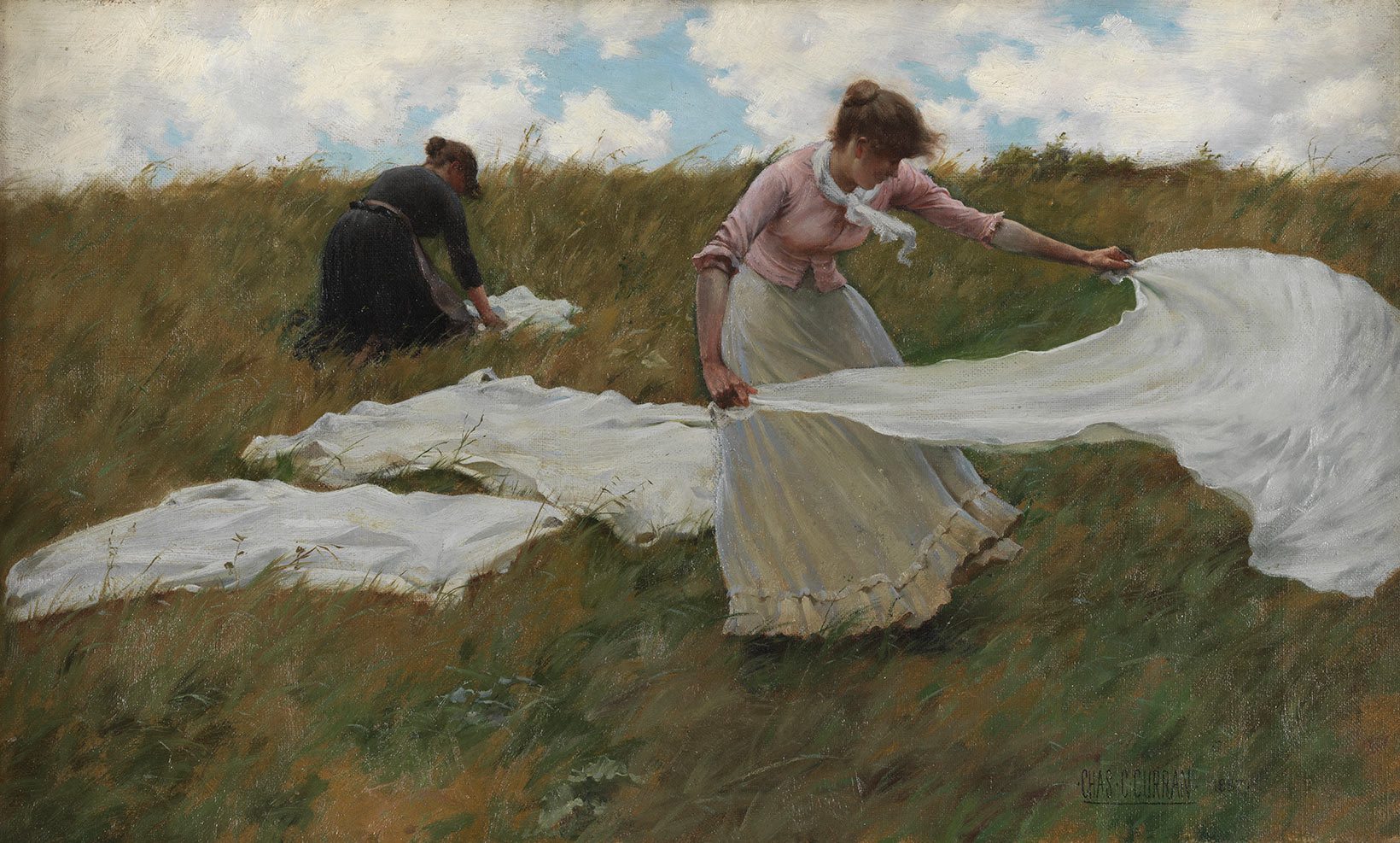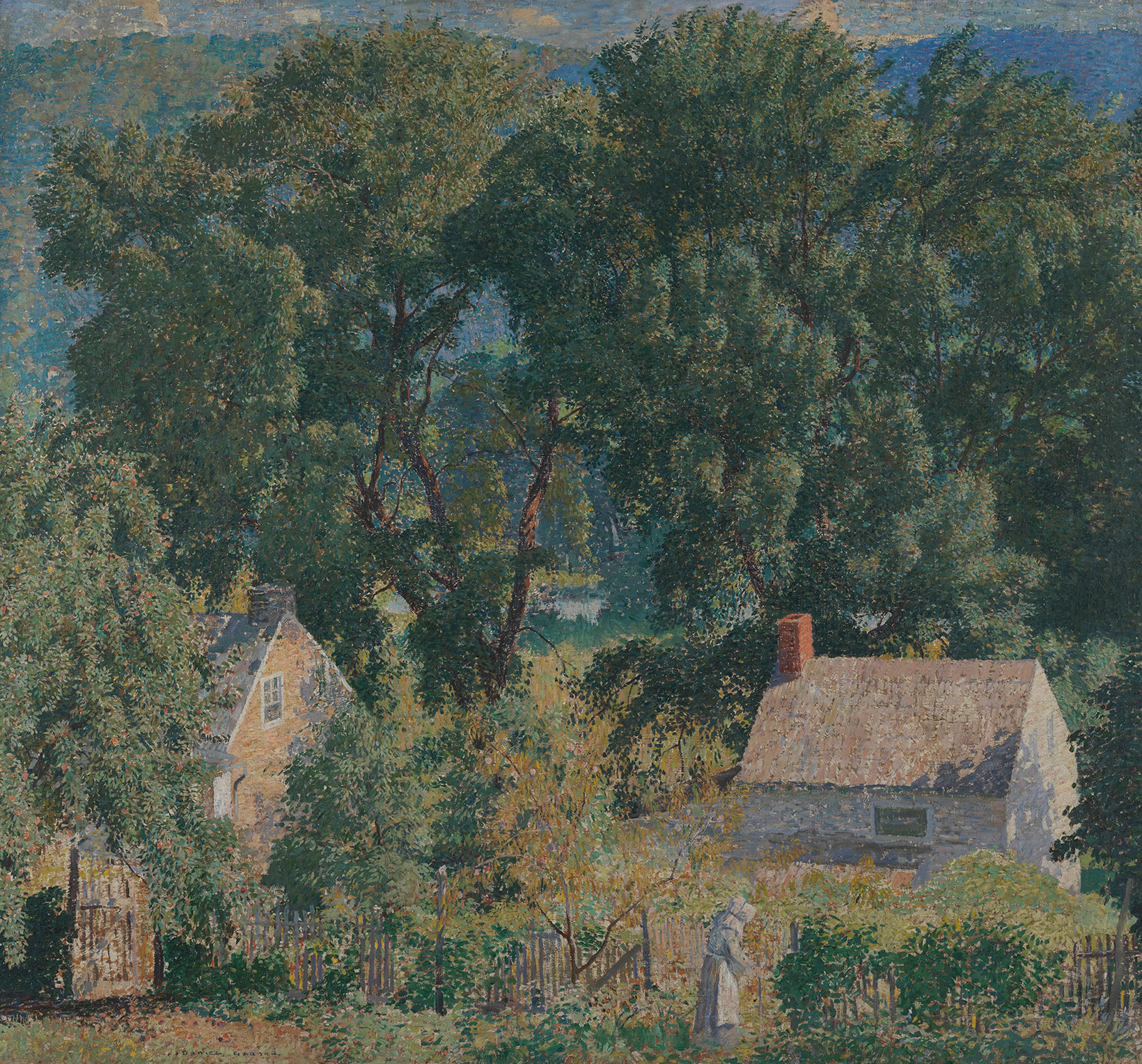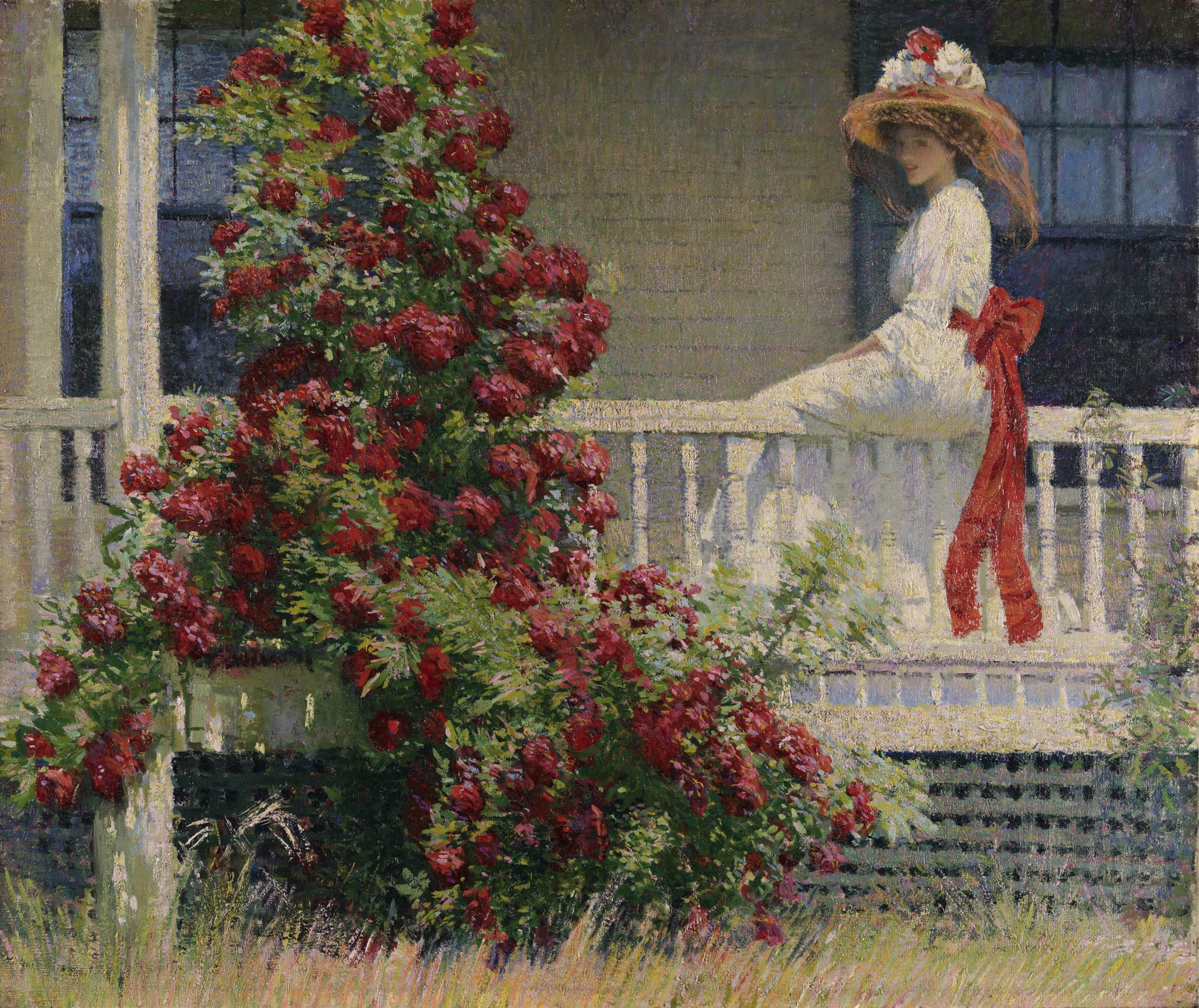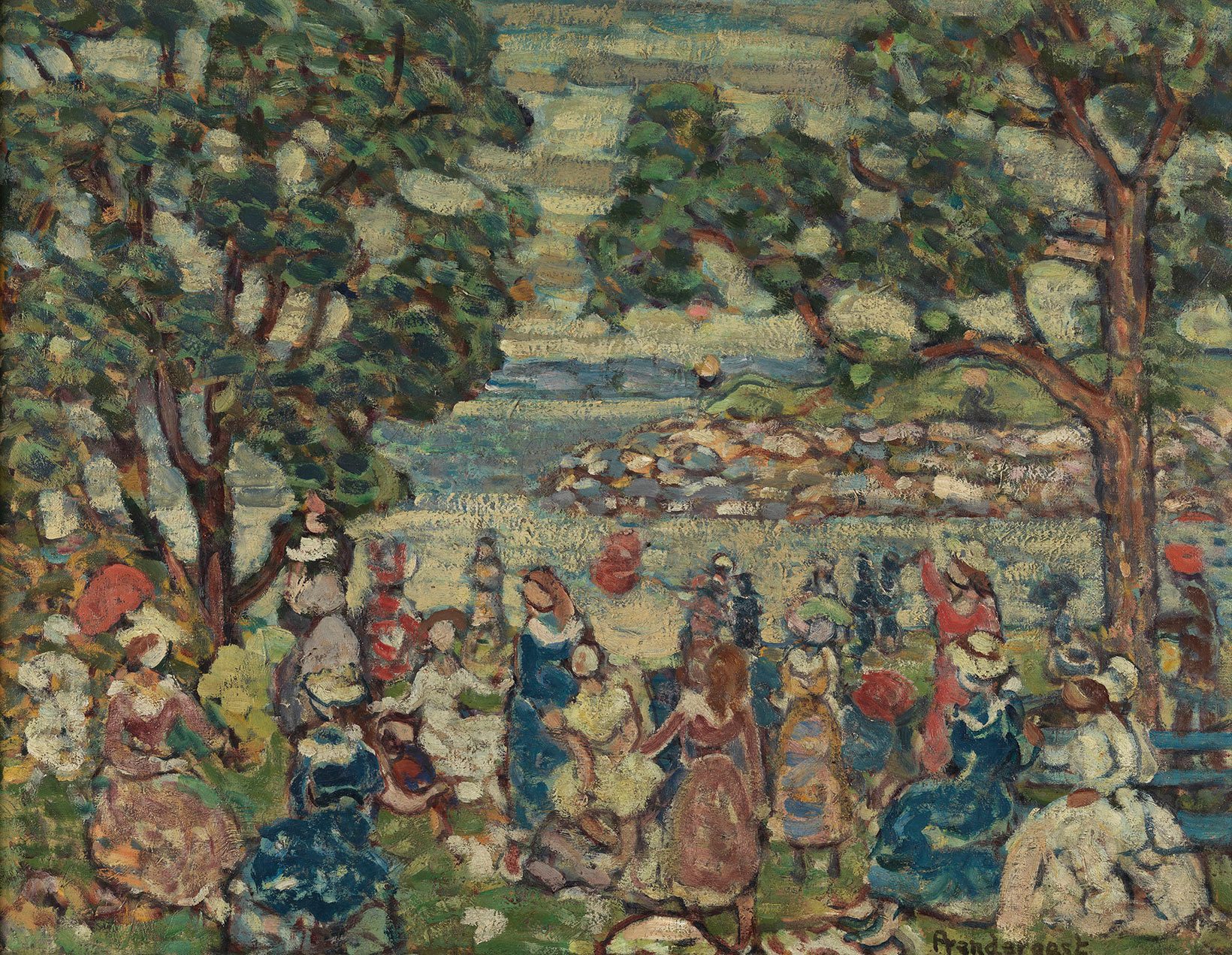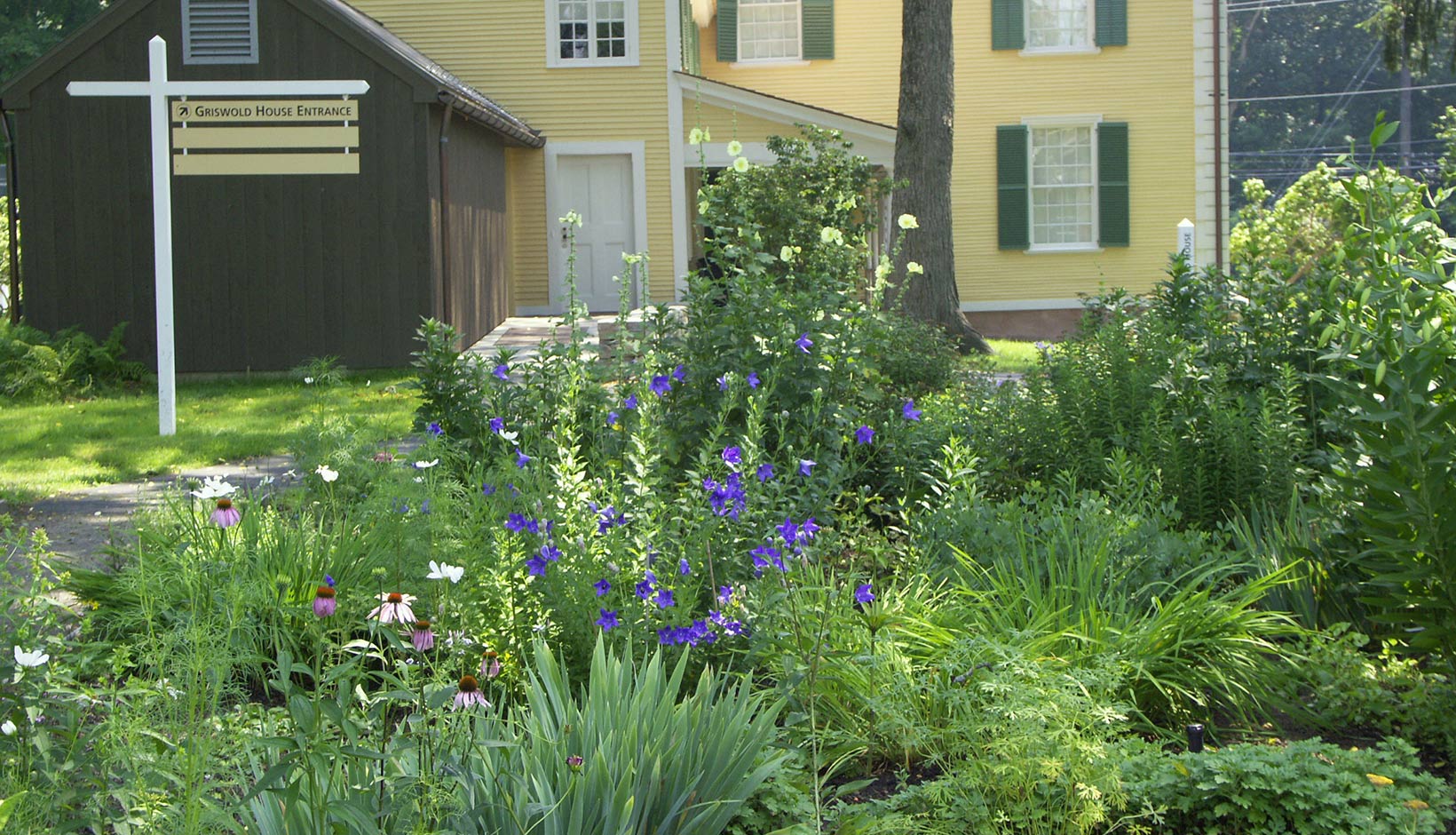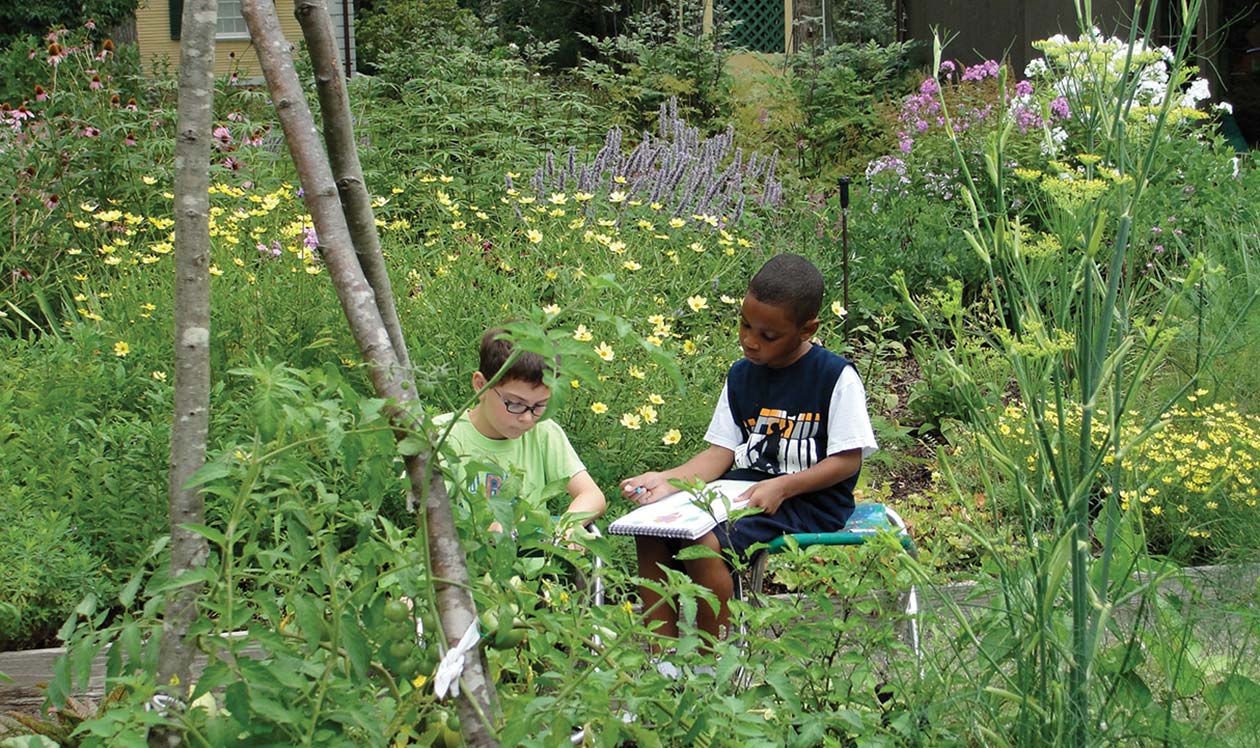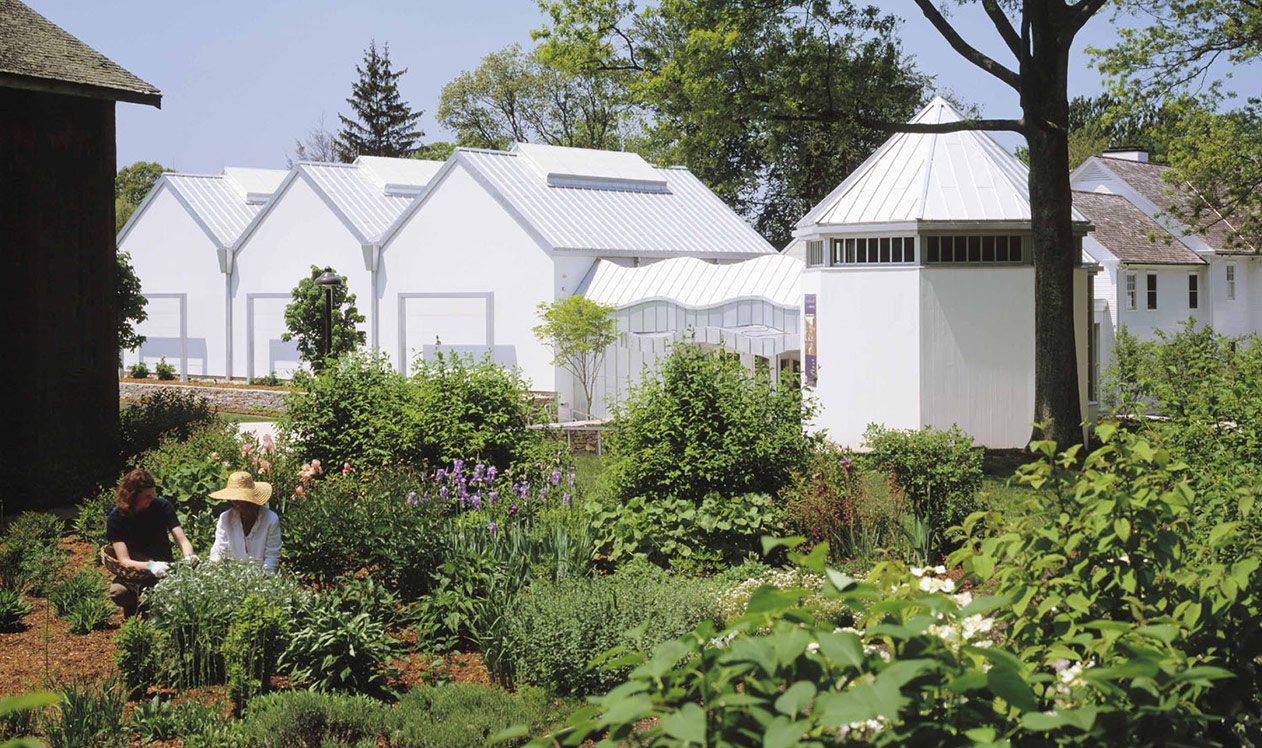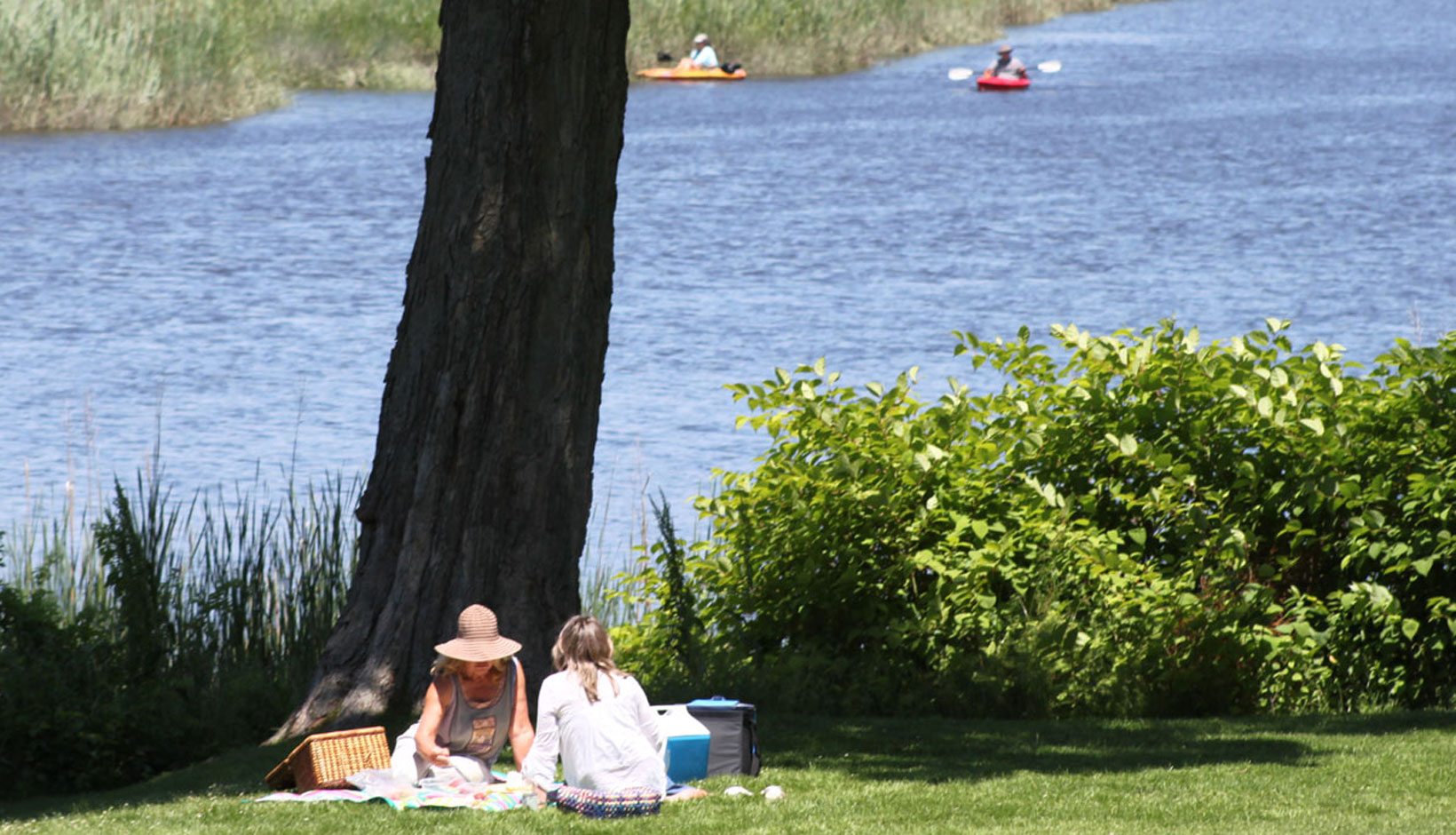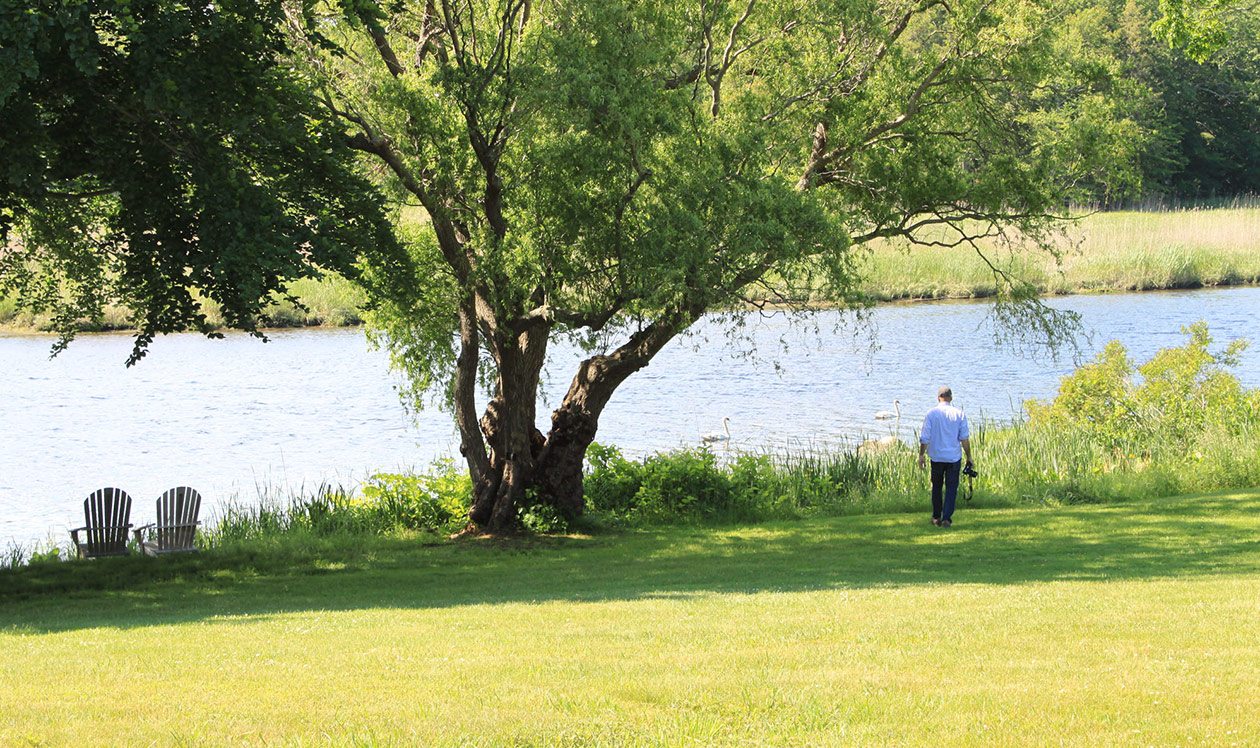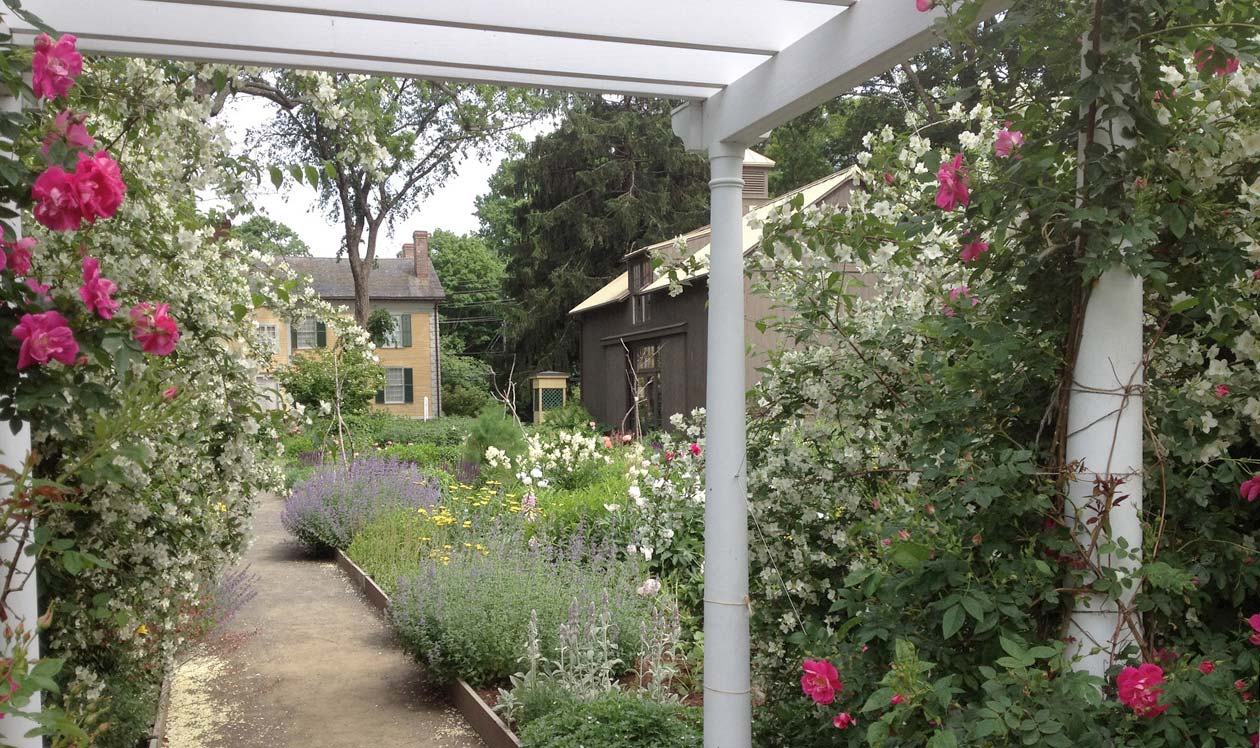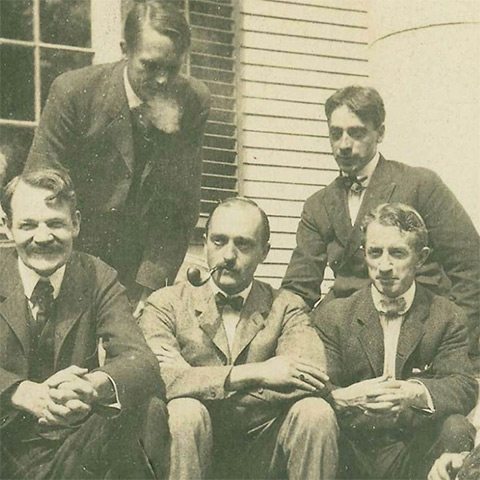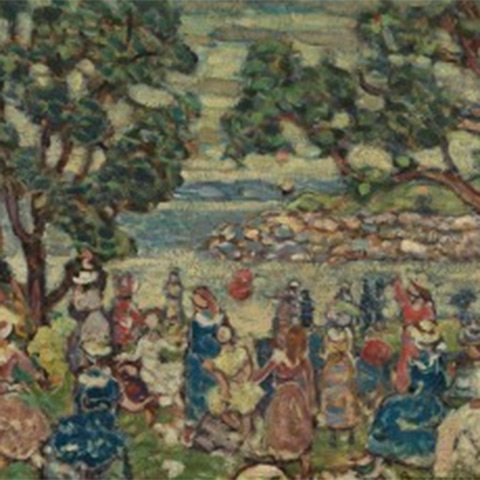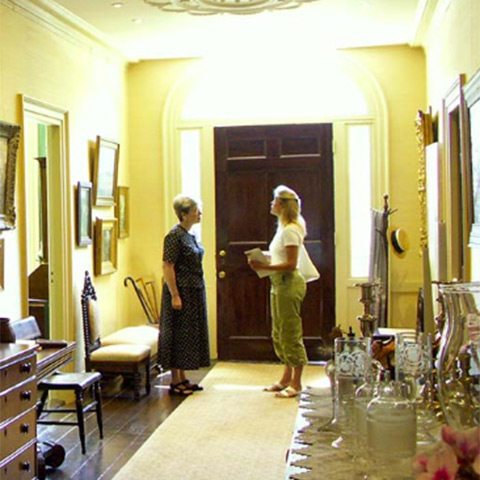The Artist’s Garden
American Impressionism and the Garden Movement, 1887–1920
- The Museum will be closed Sunday, April 9 in observance of Easter.
June 3–September 18, 2016
Support for the Florence Griswold Museum’s presentation has been generously provided by Connecticut Humanities and the Rudolph and John Dirks Fund of the Community Foundation of Eastern Connecticut.
Garden clubs, reading groups, and other social organizations, have made the Museum their go-to destination.
Interested in bringing a group to visit the exhibition and the Florence Griswold Museum’s historic gardens and landscape?
Find out more
The Florence Griswold Museum is the only New England venue for the exhibition, The Artist’s Garden: American Impressionism and the Garden Movement, 1887–1920. Organized by the Pennsylvania Academy of the Fine Arts, The Artist’s Garden tells the story of American Impressionists and the growing popularity of gardening as a leisure pursuit at the turn of the 20th century. Paintings and stained glass from the Pennsylvania Academy are blended with paintings, sculpture, prints, books, and photographs from the Florence Griswold Museum’s permanent collection, as well as selected private loans. Drawing on new scholarship, The Artist’s Garden considers the role of artists and designers in defining a cultivated landscape in an era of new attitudes toward leisure, labor, and a burgeoning environmentalism.
The Artist’s Garden is the first exhibition to situate discussions of the growth of the Garden Movement within the politics of the Progressive era, with which it overlapped at the turn of the twentieth century. The Progressive era was marked by intense political and social change. Along with the surge of nationalism and patriotic optimism came growing concerns over mass immigration, women’s suffrage, and urbanization. The Garden Movement proposed that the creation of public parks and the hobby of gardening could provide beauty and balance within this fast-changing world. The American Impressionist works in this exhibition demonstrate the profound impact of the Garden Movement on the American culture. “Not only is the Florence Griswold Museum an ideal venue for this exhibition because of its history as a boardinghouse for artists and its restored gardens, but also because Connecticut women like Old Lyme’s Katharine Ludington played an important part in Progressive-era causes such as women’s suffrage while also tending a much loved garden,” said Curator Amy Kurtz Lansing.
Many American artists developed their interest in gardens from their travels overseas. The outdoors became a major subject for Impressionists as they embraced painting outside, or en plein air. Not only does Daniel Garber’s Saint James’s Park, London, 1905 (on loan from the Pennsylvania Academy of the Fine Arts – PAFA) demonstrate the Impressionists’ careful study of light and quick, loose brushwork, but an attempt to capture the tension within urban life between the realities of development and the desire for pastoral tranquility. Public parks like St. James’s were praised by critics as peaceful oases amid the hectic frenzy of city life.
The Progressive era was a time of important change for women. They became important leaders of the Garden Movement who combined their creative interests in art and gardening with a passion for Progressive causes, such as women’s suffrage. By blending art, writing, and gardening in their careers, women like Anna Lea Merritt were at the vanguard of professionalizing women’s work. They used their public platform to engage social issues like environmental conservation and immigration through the metaphor and example of the garden. Professional artists such as Cecilia Beaux, Violet Oakley, and Jane Peterson participated in these changes by coupling their interest in modern art with a love of the garden. Peterson wrote that she loved painting flowers for their “prismatic hues of the rainbow.” In Spring Bouquet, ca. 1912 (on loan from PAFA) the steeply tilted perspective and sense of patterning in the composition are variations on the stylistic principles of Post-Impressionism. Locally, practitioners like artist, gardener, and suffragist Katherine Ludington exemplified this trend. The exhibition will include selections from its Ludington Family Collection that acknowledge the expression of the Garden Movement in Connecticut, as well as around the family’s other home base in Philadelphia, the epicenter of the Garden Movement.
Even as women were making inroads towards more equal status and finding personal and professional expression through the venue of the garden, images that presented a sentimental and idealized vision of women posed decoratively in nature were still very popular. Philip Leslie Hale’s The Crimson Rambler, ca. 1908 (on loan from PAFA, see image below) embodies this simultaneous tendency to equate women with the beauty of flowers. He pairs a flowering vine with a women by using the same white and red colors for both and by draping each across the porch or trellis. Hale’s blooms are considerably larger than the flowers actually grow, suggesting that he idealized the fashionable plant as much as the woman beside it.
Hale’s paintings also demonstrate his deep knowledge of gardening. Many artists combined their devotion to painting flowers with the practice of planting and tending gardens. “An artist’s interest in gardening is to produce pictures without brushes,” Anna Lea Merritt observed in her 1908 book An Artist’s Garden Tended, Painted, Described. Artists’ gardens were personal laboratories for Impressionist studies of light and color. They were outdoor classrooms where painters could teach their students about form and composition. Special emphasis will be given in the exhibition to the many ways Miss Florence’s garden served as a space for creative expression, both for her as a gardener and for the artists who painted and taught there. Paint was not the only medium used to translate nature’s vibrancy. Peony Window Panel, 1908-1912 (on loan from a private collection) by Louis Comfort Tiffany shows his appreciation for color and pattern. As a glass designer, his distinctive floral aesthetic defined the era and was perhaps cultivated in his own Long Island garden where he enjoyed painting.
The grounds of the Florence Griswold Museum provide the perfect accompaniment to The Artist’s Garden. After walking through the restored 1910 garden on the Museum’s campus, visitors will see first-hand in the galleries how artists captured nature’s fleeting beauty on canvas. “Miss Florence’s” lovingly tended garden was a favorite subject for many of the artists of the Lyme Art Colony who stayed at her boardinghouse. One of the paintings on view in the exhibition, William Chadwick’s On the Piazza, ca. 1908 (collection of the Florence Griswold Museum) shows a female model posing on the side porch of the boardinghouse. Chadwick first visited Old Lyme in 1902 and soon became a central figure in this artist colony, along with Childe Hassam, Robert Vonnoh, and other painters who sought the colonial-era architecture and gardens of Old Lyme and their nostalgic suggestions of a simpler, earlier time, far removed from hectic, modern city life. A walk to the Lieutenant River, on the grounds of the Museum, provides further examples of vistas painted by the nature-loving artists.
The exhibition is organized by the Pennsylvania Academy of the Fine Arts, with leading support from the Mr. & Mrs. Raymond J. Horowitz Foundation for the Arts, Inc. and the Richard C. von Hess Foundation. The major exhibition sponsors are Bill and Laura Buck, and Christie’s. Additional support is provided by Bowman Properties, Ltd.; the Burpee Foundation; Edward and Wendy Harvey; Mr. and Mrs. Washburn S. Oberwager; Pennsylvania Trust; Alan P. Slack; Martin Stogniew, in memory of Judy Stogniew, a lover of art and gardening; the Victory Foundation; Ken Woodcock; and the Wyeth Foundation for American Art.
Support for the Florence Griswold Museum’s presentation has been generously provided by Connecticut Humanities and the Rudolph and John Dirks Fund of the Community Foundation of Eastern Connecticut.
The Historic Landscape
A new Guide to the Historic Landscape encourages visitors to walk where the artists created some of their most enduring paintings.
The Museum’s grounds invite exploration. Visitors may wander the eleven acres of scenic beauty bounded by the picturesque Lieutenant River and walk through the “old-fashioned” historic gardens of Florence Griswold.
There are always new additions being planted on the grounds to evoke the natural landscape that attracted the artists of the Lyme Art Colony more than 100 years ago. Restoring the gardens and grounds that once served as a subject for the American Impressionists is central to the Museum’s plans to create a living cultural landscape here.
Learn MoreThe Exhibition Lives on in Film
Filmed on location at the Florence Griswold Museum, this production features curators Amy Kurtz Lansing and Jenny Parsons. It focuses on the exhibition The Artist’s Garden: American Impressionism and the Garden Movement organized by The Pennsylvania Academy of the Arts that was on view at the Florence Griswold Museum during the summer of 2016.
Exhibition on Screen is based in Brighton, England. The company produces and distributes feature-length documentary films worldwide. For three seasons they have been providing viewers an armchair tour of exhibitions from the National Gallery, the Tate Modern, and the Royal Academy of Arts in London, the Barnes Foundation in Philadelphia, the Munch Museum and the National Gallery, Oslo, and the Musee D’Orsay in Paris, among others. The films go behind-the-scenes at the museums and provide an in-depth look at the artists and their work.
Producer & Creative Director Phil Grabsky has been making award winning documentaries for 30 years. He saw the interest generated by season three’s Painting the Modern Garden: Monet to Matisse from the Royal Academy of the Arts in London and wanted to further explore the connection between art and gardening. The Florence Griswold Museum could provide that with its history as a boardinghouse for an artist colony, outstanding gardens, and last summer’s blockbuster exhibition The Artist’s Garden: Impressionism and the Garden Movement. Filmed in Old Lyme, as well as studios, gardens and locales in the United States, UK and France, the production is a feast for the eyes. The Artist’s Garden: American Impressionism will be in more than 1,500 theaters in 50 countries starting March 21, 2017. Films by Exhibition on Screen have been called “mesmerizing” by the New York Post and “A Cinematic Event” by Vanity Fair.

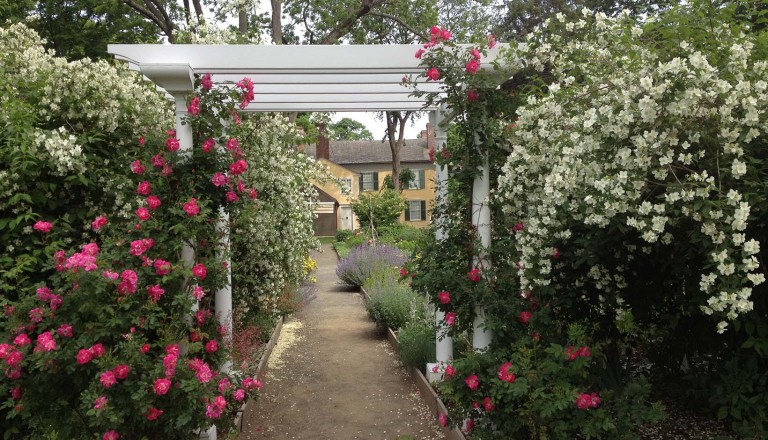
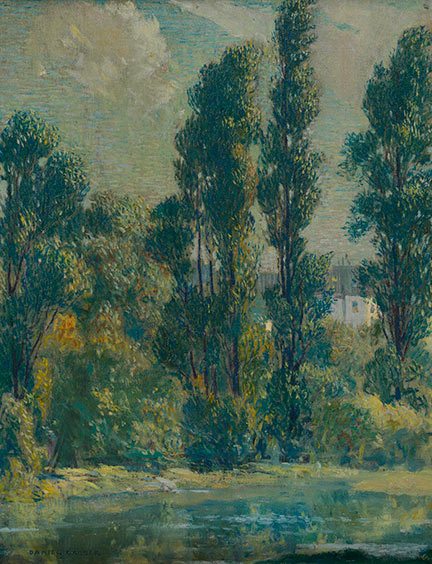
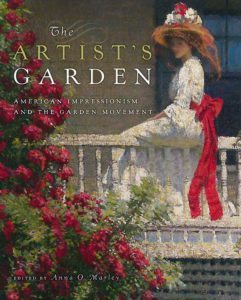 Order exhibition catalogue…
Order exhibition catalogue…